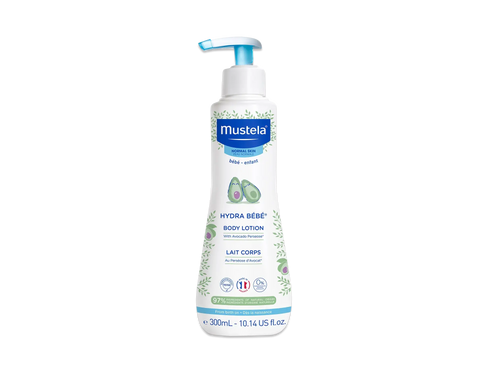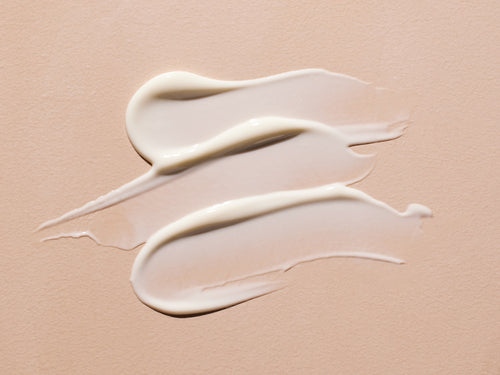It seems as if your sweet little one is always hungry, so you may worry your baby’s not eating enough. Although babies mostly feed on demand, a 1 month old feeding schedule can help set your mind at ease that they’re getting the nutrients they need.
In this article, we’ll help you understand how to read hunger cues and how much and often a breast- or formula-fed baby eats. And you can use our sample feeding schedule as a guide when feeding your little bub!
Table of Contents
- 1 Month Old Feeding Schedule: Breastfed Vs. Formula Fed
- Reading Your Baby’s Hunger Cues
- Sample 1 Month Old Feeding Schedule
- Feeding Tips For Your 1 Month Old
1 Month Old Feeding Schedule: Breastfed Vs. Formula Fed

Knowing what to expect from your 1 month old feeding schedule depends on whether your little one is being breastfed or formula fed. Babies digest breast milk faster, so breastfeeding babies eat more often. But either way, at one month old, they’re eating around the clock.
Formula-fed babies are a bit easier to track, as bottles are more transparent — literally.
Seeing the milk go down makes it easier to feel more confident with the feeding. If you’re breastfeeding, you’ll have to estimate their intake by how long they feed.
As a rule of thumb, breastfeeding for 20 to 40 minutes (half on each side) should suffice for a one month old baby.
Reading Your Baby’s Hunger Cues

How do you know when your baby should be fed? The first step is learning your baby’s hunger cues. Let’s take a look at what exactly that means.
Hungry Vs. Full
One month old babies have many ways to signal that it’s meal time. Crying is considered a late feeding cue, but there are others to look out for so you can satisfy your baby before they get fussy, as (not surprisingly) a crying baby is harder to feed.
Here are some things that your baby might do to tell you they’re hungry before they start to cry include:
- Moving their fist to their mouth
- Sucking on their hands
- Turning their head toward the bottle or your breast
- Smacking their lips
- Sticking out their tongue
When baby’s full they’ll also try to tip you off. Here are some signs that your little one has had enough:
- Releasing from your breast or bottle
- Turning away from your nipple
- Relaxing and opening their fists
Signs Of Success
You’ve fed your baby and they’re quiet again, but how do you know for sure it’s all going well? First of all, your little one will sleep better, and you’ll see changes in their growth and development.
For another sign of success, check their diaper. What goes in must come out! You’ll want to look for four to eight wet diapers a day as well as a bowel movement.
Pro tip: For diaper changes, try our Cleansing Wipes infused with avocado along with our Diaper Rash Sprayable Cream to gently cleanse and soothe your infant’s diaper area.
Sample 1 Month Old Feeding Schedule
We’ve made a 1 month old feeding schedule for both breastfed and formula-fed babies so you can get an idea of how much and how often you’ll be feeding your one month old.
Breastfed Babies

Generally, breastfed babies will nurse about eight to 12 times per day, or every two to three hours. As they grow, you can expect them to eat more, less often. But for now, it’s all about frequent small feedings.
6 AM
Breastfeed 10 to 20 minutes on each side.
You’ll probably want to get a little more sleep, so put baby down for a nap afterward. When you’re ready to get up, enjoy some playtime together.
9 AM
Breastfeed 10 to 20 minutes on each side.
Be sure to give yourself a nice healthy breakfast. Remember to consume 450-500 extra calories so that you both get the nutrients you need. After breakfast, it’s time to play!
12 PM
Breastfeed 10 to 20 minutes on each side.
It’s lunchtime so get yourself a nice nutritious lunch. Afterward, grab your stroller and take a spin outside. Keep your precious baby’s skin protected with long sleeves and pants, while you get a little vitamin D for yourself — and don’t forget your Mustela sunscreen.
3 PM
Breastfeed 10 to 20 minutes on each side. Now it’s time to try and catch a few more zzzzz’s! Give your baby a massage, and then both of you can take a nap.
6 PM
Breastfeed 10 to 20 minutes on each side.
Make sure you have a healthy dinner and spend some extra bonding time with the whole family. Soon after dinner, it’s bedtime for baby. Practice your bedtime routine.
9 PM
Breastfeed 10 to 20 minutes on each side. After you’re done feeding your little one, put them right back in bed. Then you should follow suit.
12 AM
Breastfeed 10 to 20 minutes on each side. Again, put them right to bed afterward.
3 AM
Breastfeed 10 to 20 minutes on each side. This is the last feeding of the night. Get some extra sleep once baby is full.
Formula-Fed Babies
Formula-fed babies generally will consume four ounces of formula every four hours. Here’s what that might look like.
6 AM
Feed baby 4 ounces of formula. Between feedings, baby will nap, enjoy some tummy time, and play.
10 AM
Feed baby 4 ounces of formula. Let them spend some time on an activity mat, then take another nap.
2 PM
Feed baby 4 ounces of formula. Then take your little one on a stroll so you can get out of the house for a bit.
6 PM
Feed baby 4 ounces of formula.
Afterward, it’s bath time! Mustela Gentle Cleansing Gel is a good choice to gently clean and soothe baby’s hair and skin, followed by our Hydra Bebe Body Lotion for extra skin nourishment.
After the bath, it’s time for bed — a baby massage and a nice bedtime story could be part of the routine.
10 PM
Feed baby 4 ounces of formula. Now tuck them back to bed.
2 AM
Feed baby 4 ounces of formula and then head back to bed. You’ll need all the rest you can get!
Feeding Tips For Your 1 Month Old

Now that you have a sample 1 month old feeding schedule, here are a few extra tips that can help you get the most out of your routine.
- When your little one is just one month old, feed them small amounts at a time. It’s going to be frequency over quantity these days.
- Speak softly to your baby while you feed them, and look them in the eye. Feeding time is great for early bonding and building baby’s trust!
- If you’re breastfeeding, talk to your doctor about Vitamin D supplements. Although formula is infused with Vitamin D, breastfed babies may require a boost for bone health.
- Make sure if you’re not the only one feeding your baby that you all do it consistently (as much as possible). Your little one will feel more comfortable with a predictable routine.
- If you want your baby to get the right nutrients, you’ll need to make sure to eat well yourself (they are getting their food from you, after all). As we said, breastfeeding mothers require an extra 450 to 500 calories a day.
- Watch baby’s weight to see the fruits of your labor. Generally, babies will gain about a half-ounce to an ounce every day.
- Because you’re feeding your little one so much, your nipples may feel uncomfortable. Take care of yourself with our Organic Nursing Comfort Balm, enriched with organic olive oil, to soothe your sore skin.
- If you’re breastfeeding and having trouble feeding your baby, be sure to check in with your doctor or a lactation consultant. They can help you with latching techniques and other support for baby’s appetite.
A Happy, Healthy 1 Month Old
With all of the demands of a new baby, feeding is one of the most important. Eating right will lead to good sleep and healthy growth. Follow our 1 month old feeding schedule as a guide and you’ll be headed in the right direction!
We’ve explained what you can expect when feeding your one month old, and we’ve shared the signs that your baby is eating well. Now it’s time for you to learn from your little one and respond to their cues.
As you’re adjusting to life with your little one, don’t forget to care for their skin (and yours!), too. Whether it’s soothing yours with our Organic Nursing Comfort Balm or baby’s with our Diaper Change Set With Olive Oil and Aloe, we’re with you for these precious moments of parenthood!















